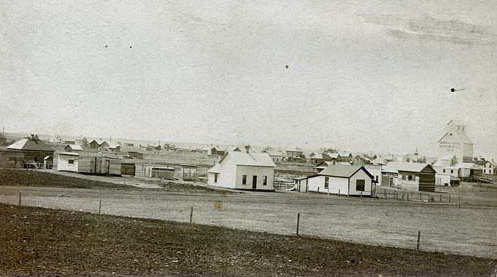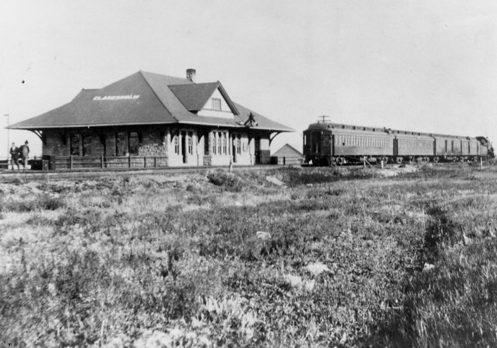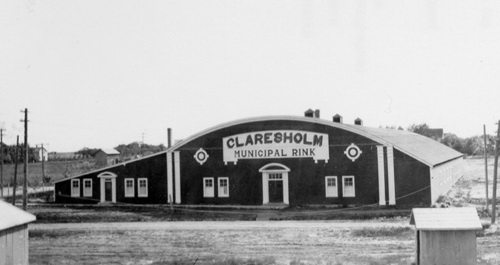 C L A R E S H O L M
C L A R E S H O L M
Claresholm, named by Canadian Pacific Railway superintendent John Niblick, was established as a watering stop for steam trains along the Calgary-Fort Macleod railway line in 1891. In 1895, the original train station, a simple box car, was replaced with a prefabricated wooden building.
The first settlers arrived in 1902 and by 1903, Claresholm was incorporated as a village. The Post Office opened on December 1, 1902.
By 1905, Claresholm was incorporated as a town, which was the last official act made by the government of the Northwest Territories before the creation of the Province of Alberta the following day. The town grew rapidly, however, problems began to arise due to constant water shortages. In 1908, the construction of the towns first water system began, and by 1910, the town had a fully functioning water line with a 100,000-gallon water tower.
During the time between 1907-1928, Claresholm prospered. The town featured a large public school, an agriculture college, a hospital, water system, several shops, theatres, hotels, and grain elevators, and Canada’s first motorized school bus. Unfortunately, the great depression put an end to that growth, and led to the closure of the School of Agriculture.
World War Two however, was a different story entirely. The second world war led to the construction of a Royal Canadian Air Force Base a few kilometers west of town. Base Service Flight Training School #15 was established and offered several classes for soldiers to receive their licenses to fly Harvard aircraft. The soldiers would often spend their free time using the town facilities and drinking at local bars, a welcomed change from the drab years prior. The new Municipal Hospital was constructed during this time and served the air base, as well as the town, leading to constant running near capacity.
After a brief period of calm, N.A.T.O decided to take over the Claresholm Airbase for a training facility in 1951 where over 1500 soldiers received their wings. This acquisition led to the construction of several new apartment towers, townhouses, duplexes, and single-family homes alongside a fire station, small hospital, churches, and amenities at the base. During this time, Claresholm became a well-established centre for provincial mental health care.
In the later half of the 20th century Claresholm began to faulter. The closure and subsequent demolition of most of the Air Base led to a drastic drop of activity in the town. Many residents fought to save the base or reuse the base as a veterinary school, or detention centre for youths, however that was not to be. While the hangars were spared and turned into industrial use, many companies did not last, and left the area after only a few years.
From the 1970’s onward, many structures were demolished, abandoned or targets of arson, and many businesses closed. Young populations left for the cities and the town council at the time wanted to turn the town into a retirement centre and many businesses trying to set up shop were refused. This included a rumoured shopping complex featuring a hotel, Wal-Mart, and fast-food restaurants.
In recent years, Claresholm has begun to grow again. After decades of stagnation, businesses have started moving in, and a new town hall and housing developments have been built.
historical information courtesy of Ryan Mckirdy
| |
|
| |
|
| |
|
| |
|
| |
|
| |
|
| |
|
click any image to enlarge
---------- Town Views ----------














---------- Street Views ----------




















---------- Railway ----------





---------- Schools ----------



---------- Churches ----------



---------- Commercial Buildings ----------










---------- Public Buildings ----------


---------- Special Events ----------

